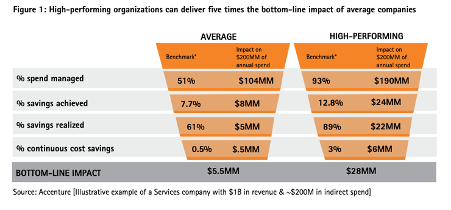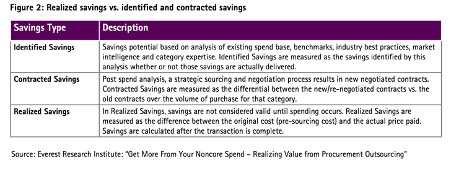Speed up procurement to rapidly realise savings…
In the same way that sales leaders are targeted with increasing sales and maximising revenues, procurement leaders are targeted with reducing costs and managing risk. These two functions are vital to all organisations so in this article I would like to explore the importance of deal velocity for procurement contracts and how that drives “speed of savings”.
Deal velocity is the speed with which a company can negotiate and execute a contract to successfully close a transaction. Although it is absolutely key for any organisation, deal velocity is often overlooked as a KPI that can be measured and improved to maximise the full value of a deal.
At ThoughtRiver, we have been discussing deal velocity for some time now and have explored the emergence of deal velocity as a shared KPI between sales and legal teams within forward-thinking organisations. We specifically focused on the importance of speed in sales and how faster contracting helps a business to sign more deals and pull revenue forward. The benefits of doing this are obvious and we will not dwell on them again here. What is perhaps less apparent are the equally impactful benefits available to a company through speeding up their procurement process so that they can realise savings more rapidly.
Procurement is the act of buying a product or service
Typically, procurement has been seen as a tactical cost-saving component within the broader and more strategic mandate of sourcing and acquisition. A recent Deloitte study found that 79% of CPO’s (Chief Procurement Officer) said that procurement savings was their top priority, and 57% said that managing risk is their KPI. This same study showed that the next two most important areas of focus for CPO’s are introducing new products/services and increasing cashflow.
There is, however, an apparent disconnect in the way that savings are measured. Procurement tend to claim the savings at the point they are negotiated and the deal signed, while finance tend to care about how any negotiated savings are actually realise and can be applied to the bottom line. The term “realised savings” is becoming more commonplace as a business jargon and most procurement departments are claiming to be delivering it. However, the finance team would often interject, saying, “hey, wait a minute, but where are these savings”? Finance tends to require the negotiated savings to be physically captured and applied to the bottom line, so it can actually be measured. This gap should be of especial focus of the CPO, the COO, and the CFO as businesses seek various cost saving measures in the wake of the current pandemic.
A recent Accenture study shows us the variance between these different types of savings

In this scenario, we can see that the difference between achieved savings (those that have been negotiated and contracted) and realised savings (those that have realised through compliance management efforts) is significant and worth several million dollars per annum to most organisations. We can further segment this world of savings nomenclature by dividing the achieved savings bucket into “identified savings” and “contracted savings” as shown below in this study from the Everest Research Institute.

The first step of identifying savings is obviously a key focus for all procurement teams, and most are now becoming quite adept with market intelligence and category expertise. A key tool in all procurement leaders' arsenal is creating competition between suppliers. That work starts with a deep understanding of the market served by these suppliers, and how their differing feature sets actually compare. The ability to create competition is at least partly served by internal stakeholder management and an example might be teaching these stakeholders to keep their requirements within industry standard specifications. This then enables procurement to reach out to a broader group of suppliers, which in turn creates more competition. This clearly requires the procurement team to play an educational role within their company.
Once savings have been identified within the supply chain, the job of the procurement leader then becomes capturing those savings within a contract. Be that negotiating a new contract or renegotiating an existing contract, but procurement will now need to involve the legal team at this stage. Let us spend a moment examining this new character. Contract review lawyers have two main customers in most organisations: the sales team, and the procurement team; they have to balance the demands from these functions that compete for head-space as they struggle with their workload. For these lawyers, staying focused and getting through the ever growing workload is hard enough even without the regular “just a quick one” requests from sales and procurement for their contract to be prioritised. Nobody is going to be happy when the negotiated savings are sitting in a contract review lawyers inbox awaiting review.
It is absolutely essential for all procurement leaders to get their identified savings contracted as quickly as possible so they can book them against their targets and start the process of implementing the change to realise the savings and appease that CFO we mentioned earlier. Let us analyse this with the example of a new £100k contract for some cutting-edge technology and explore how that typically unfolds from a procurement leader's perspective. In this example, we are assuming that the savings have been identified as part of an approved business case and the procurement team have narrowed the field down to a single supplier whom they now want to contract with. The main commercial terms have already been discussed, negotiated, and verbally agreed as part of that process.
- Discuss/agree whether an MSA is the right way to handle things or whether to do the deal – starting from the suppliers’ standard terms. Typically, new software purchases will happen on the software vendor's terms and as the fee increases so does the likelihood that the terms are negotiated from the standard form. At £100k, the majority of deals tend to be negotiated.
- Request/receive a MS Word version of the vendors terms and conditions and compare those against the company’s contracting playbook to look for major red flags. Good procurement managers will do this first pass review to make their subsequent conversations with legal both richer and more efficient. It is about becoming a good partner to their legal colleagues.
- Send this document to the legal team (ideally marked up with your comments – see note above) but let’s be honest, it is normally just forwarded on as it is and the lawyer has to start from scratch.
- Wait for the legal team to complete their review of the contract. This can take anything from days to weeks and that time can never be recovered. Time from which you cannot access the savings you have already been identified, negotiated and agreed. Put simply, this gap costs the business money!
- Once the legal team has completed their review or pre-screening of the contract and marked up their comments/amendments to the contract using track changes in Word, this is ready to be sent back to the vendor with some commentary around any major deviations.
- The wait continues: the vendor's legal team needs to review the comments and contract redline to make their own amendments and comments to the document. Once they have completed this work, they will likely brief the salesperson who is managing the sale and will send it back to the procurement team again for the next round of review.
- Repeat steps 3 to 6 as the positions between the parties narrow and the contract gets closer and closer to being agreed.
- When we analysed this process at ThoughtRiver, we found that there are typically 5 to 10 iterations of a contract during a negotiation all requiring a review.
ThoughtRiver exists to make this cumbersome and inefficient contract review process faster and more streamlined. We drive deal velocity for our clients by doing two things:
- We make lawyers more efficient when they are reviewing contracts by reading the entire contract for them, summarising any issues or risks, and then providing them with a guided remediation of the contract within MS Word.
- We allow business users like sales or procurement leaders to self-serve, by enshrining the legal team’s contracting policies into our platform for an automated contract review. The end result of which is the business benefits from much faster deals and the legal team has the confidence that policy is being adhered to and any risk is properly managed.
Our clients are using ThoughtRiver to drive significant efficiencies in their contracting process which in turn is giving them huge business benefits by driving their deal velocity. They close more deals and their procurement teams really deliver the savings that are so often lost or delayed by slow contracting.
If you would like to read about the wider benefits of automated contract review then you can do so here, or if you want to talk to us simply click here to setup a chat.



